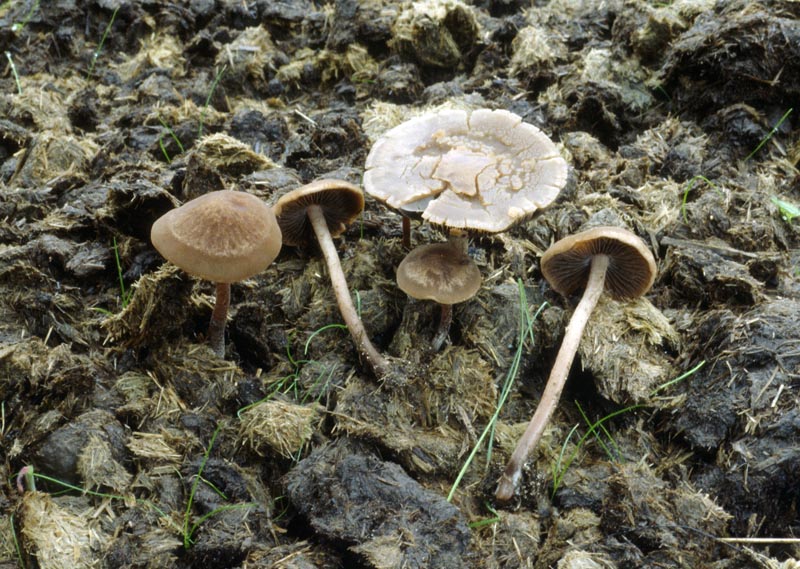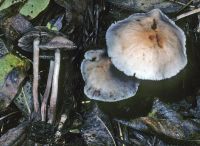Habitat: Occurs on dung (often of horses) or dung-rich soil in gardens or lawns.
Conservation Status: Not of concern
Edibility: It is weakly to moderately psychoactive.
It is weakly to moderately psychoactive.
Panaeolus subbalteatus is typical of the genus in occurring on dung (often of horses) or dung-rich soil in gardens or lawns, its relatively small size, and having mottled gills and large, smooth black spores. It differs from other panaeoluses in its tendency to grow in small clusters, its stocky stature, and convex caps that can expand to plane in maturity. The dark band that usually is present and persistent gives the species its name (balteat is Latin for girdled, and sub indicates somewhat) and further separates it from most species in the genus. P. cinctulus, P. rufus, and P. venenosus are considered to represent the same species. P. subbalteatus has been spread inadvertently by use of composts that contain its spawn, and intentionally through cultivation.
PNW Herbaria: Specimen records of Panaeolus subbalteatus in the Consortium of Pacific Northwest Herbaria database.
CalPhotos: Panaeolus subbalteatus photos.





